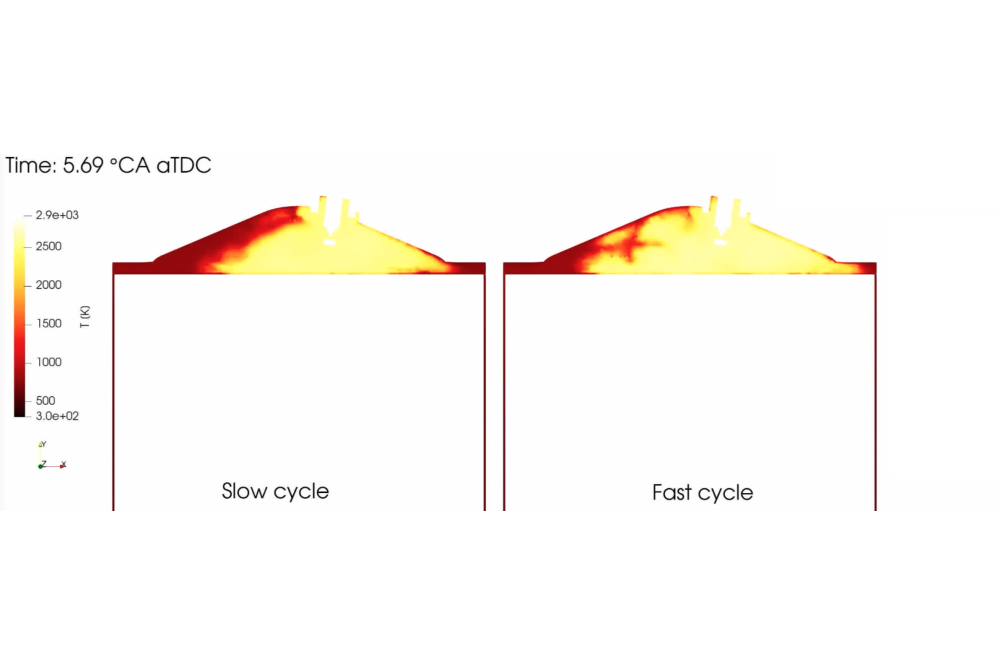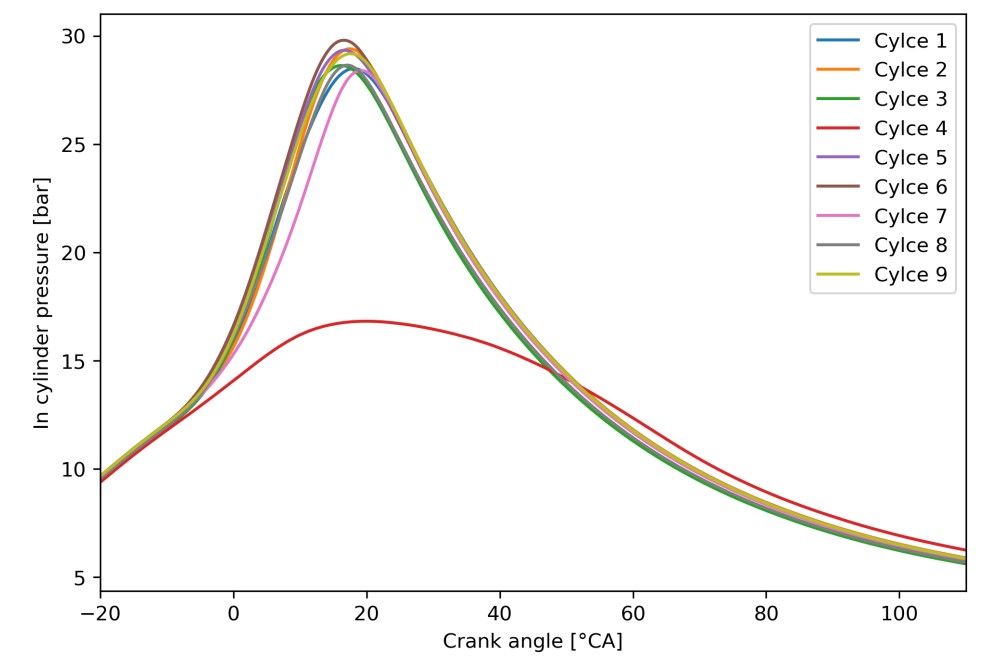Benchmark Platform for Scale Resolving Simulations of Internal Combustion Engines
Introduction
Internal Combustion engines still play a significant role in today’s mobility and transport sector. They will still be relied upon heavily in modern powertrain designs and cannot yet be replaced for all applications. For engine designers to meet ever stricter emission targets, a continued research effort is required to find further improvements in an already well-established technology. To this end, Computational Fluid Dynamics (CFD) is a powerful tool, that enables a detailed understanding of a given engine design and can be applied in all stages of the development process. For years, Reynolds Averaged Navier Stokes (RANS) simulations have been deployed successfully in industrial applications. However, as RANS simulations model all turbulent scales, they inherently lack the capability of analysing highly fluctuating phenomenon like cycle-to-cycle variations or knocking. These phenomena need to be understood and predicted reliably in order to make further strides towards improved thermodynamic efficiency and emissions. Despite the trend towards scale resolving simulations in academia, there are still many open questions that have to be tackled in order to pave the way for wide spread adoption of scale resolving simulations in industry. One major issue is the lack of reliable reference data at relevant operating conditions in modern direct injection spark ignited engines. This data is required for the validation of CFD codes and models. To this end a benchmark data set is to be created of the optically accessible Darmstadt Engine. This Benchmark data set needs to be extracted from both HPC-CFD Simulations and experimental data in order to enable a thorough cause and effect analysis, which combined with the raw data, will constitute a holistic benchmark platform.
Methods
A robust cell-centred finite-volume framework in the open-source toolbox OpenFOAM was used. An in-house code framework (TFMotion) based on both python and C++ (OpenFOAM) is employed to manage the engine simulation relevant aspects, such as mesh generation, mesh motion due to piston and valve movement and mapping between different key grid meshes. In order to simulate the mixture formation with direct injection the Euler-Lagrange approach is used. For reactive flow cases (fired engine operation) a flame surface density model is employed. The input parameters for this model are tabulated in a pre-processing step using 1-D freely propagating flamelets using the inhouse codes ULF and pyFLUT.
Results
The framework was successfully applied to the optically accessible Darmstadt Engine. Different operating conditions were able to be simulated. These include motored, motored with direct injection and homogeneous charge combustion operating conditions. Since the project is focused on generating benchmark data, sensitivity studies were carried out in order to identify error sources, that caused discrepancies to experimental data. This includes for example parametric variations of wall temperatures, near wall models, ignition timing and flame surface density model parameters. Multiple cycles of combustion simulations also showed that the frame work was able to capture cyclic variations.
Discussion
One major criterion that is often used for validation of engine simulations is a comparison of the pressure trace to the experiment. For the motored operating conditions, an overprediction of the simulation is often reported in literature. It was shown that this is mostly likely due to incorrect assumptions of wall temperatures and neglecting the large engine crevice. For the fired case overpredictions of pressure trace were also observed. The peak pressure and its location in terms of crank angle, is sensitive to spark timing, wall temperature and wall heat flux, as well as overall combustion progress. However, all sensitivity studies displayed an overprediction of the pressure trace in the expansion phase. It was identified that this due to an incorrect prediction of the combustion of unburned mixture ejected from the engine crevice during the expansion stroke. Large engine crevices are typical of optically accessible engines and are not common in production engines. Hence commonly applied combustion models do not predict this behaviour well. As can be seen in Figure 2, cyclic variability was also observed. It can be seen that the fastest and slowest cycle differ in terms of flow conditions at the ignition time.
Outlook
In the future the investigations will be extended to direct injection fired operating conditions and direct flow comparisons will be made.






